Outdoor worksites can challenge construction workers with a plethora of elements – harsh sun, whirling wind, or even torrential downpour. But, as they say, "the show must go on." Therefore, having the right rain gear becomes crucial, not just as a defense against the elements but also as a requirement to maintain productivity.
In an arena overflowing with options, selecting suitable rain gear can seem like a formidable task. This article aims to simplify this strenuous process by delving into the world of robust and high-performance rain gear for construction workers. We'll explore the various materials used, discuss the significance of features like waterproofing, wind resistance, breathability, and comfort, and help you consider the price point that best suits your needs.
Join us as we unpack the expansive realm of rain gear, making it easier for you to make an informed choice for those rainy days on the construction site. Practicality, durability, and performance have never been this accessible!
Materials for Durable Rain Gear
You're shivering under a tree, wishing you'd brought that elusive rain jacket you've stashed in a forgotten corner in your closet. As the rain pours, you start to wonder, what makes a raincoat genuinely effective, and more importantly, durable? Certain materials and methods lead to the creation of reliable rain gear. Three recommended materials include PVC, nylon, and polyester, all well-known for their waterproof and breathable qualities. Let's take a deeper dive into what makes these materials the ideal choice for your rain gear to keep you dry during the downpour.
PVC
Polyvinyl Chloride, or PVC, is a popular choice for robust rain gear owing to its water-resistant and longevity properties. Renowned for its rigidity, PVC can withstand harsh weather conditions and resists long-term wear and tear. It's undoubtedly a top consideration for enduring rain gear. The key characteristic of PVC is its flexibility. Ever noticed how a raincoat can be folded snugly into your backpack? This comes down to the elasticity provided by PVC.
Nylon
Next in our trio of durable materials is nylon - a smooth and strong fabric known for its exceptional resistance to abrasion. Unlike some other materials, nylon maintains a significant level of waterproofing while also offering breathability — an essential asset when it comes to active outdoor wear. And let's not forget nylon's limited absorption, which means your gear won’t become weighed down when it’s raining.
Polyester
Last, but emphatically not least, we have polyester — a synthetic fiber widely celebrated for its durability and versatility. Polyester is hydrophobic, meaning that it repels water, rather than absorbing it, playing a crucial role in keeping you dry in a deluge. Actively resistant to mildew, polyester is also straightforward to clean and maintains its shape well, prolonging the life of your rain gear.
Each of these materials, PVC, nylon, and polyester, have innate properties that make them an excellent choice for long-lasting, efficient rain gear. They combine waterproofness, breathability, and durability - the trinity for ultimate rain protection. Therefore, when preparing for the rainy season or an outdoor adventure, consider these heavy-duty materials for your armor against the elements. Weathering the storm has never been more manageable.
Exploring Maximum Durability Rain Gear
If you are a construction worker, a hiker, or simply someone who's frequently outdoors, the forecast can be a real buzzkill. To combat the whims of nature, it’s crucial to arm yourself with high-quality rain gear that is as resilient as it is waterproof. The best protective equipment is crafted from durable materials like Gore-Tex, PVC-coated polyester, or heavy-duty PU, significantly enhancing their impermeability and longevity.
Gore-Tex
Often touted as the gold standard in breathable yet waterproof textiles, Gore-Tex is definitely a game changer. This phenomenal fabric consists of a porous membrane that is water and wind resistant while allowing moisture vapor to escape. Its durability is largely because of its distinctive construction:
- Breathable, microscopic pores: Offers excellent ventilation and prevents sweat buildup
- Resistant to abrasion and tears: Ensures long lifespan
- Waterproof: Keeps you dry in the harshest of conditions
While slightly more expensive than some alternatives, the higher up-front cost of Gore-Tex rain gear can be justified by its performance and longevity.
PVC-Coated Polyester
Perfect for combatting chilly winds and relentless droplets, PVC-coated polyester arrives as a great contender in the world of durable rain gear. A layer of PVC resin is added to the sturdy polyester fabric, rendering it waterproof and highly resistant to wear and tear:
- Wind resistant: A strong barrier against the cold wind
- Waterproof: A reliable ally in wet weather
- Resilient: Effectively resistant to damage and wear
While it's slightly less breathable than Gore-Tex, its resilience combined with a more budget-friendly price tag makes it an excellent choice for many construction workers and outdoor enthusiasts.
Heavy-Duty PU
Heavy-duty PU (or polyurethane) boasts a magnificent combination of durability and water resistance, making it a desirable material for rain gear. This material offers:
- High tensile strength: Provides superior durability and resistance to wear
- Water resistance: Effective protection against rain and moisture
- Flexibility: Adapts to wearer's movements for comfortable usage
While it isn’t the most breathable material around, the quality of protection offered by heavy-duty PU, especially against heavy rains and wind, can be quite unmatched.
Choosing the right rain gear depends on your specific needs, whether that is breathability, cost-effectiveness, or sheer durability. Whatever the case, be sure it is made from one of these hard-wearing materials. Gore-Tex, PVC-coated polyester, and heavy-duty PU rain gear can keep you dry and keep going, regardless of what the weather throws at you. Remember, it's not just about staying dry through the storm but choosing gear that will last through many.
Leveraging Rain Gear Layers for Increased Durability
From the casual hiker traversing a rainy forest trail to the seasoned mariner braving a typhoon in the open seas, rain gear serves as our essential line of defense against nature's wet and wild conditions. To effectively shield from the elements, these pieces of equipment generously utilize multiple layers in their construction – an engineering marvel that directly boosts durability and overall performance. Delve into the world of rain gear design and discover how these layers work in synergy to keep us dry and comfortable outdoors.
Rain gear typically comprises three sophisticated layers fused to form a powerful shield against the harshest of downpours. Each layer possesses a unique role, contributing to the raincoat's core functions of water resistance, breathability, and longevity.
Firstly, there's the outer layer or shell, which faces the brunt of the rainfall. It's usually treated with a water-repellent coating—dubbed as the 'Durable Water Repellent' or DWR—to allow raindrops to bead up and slide off rather than soak in. This layer needs to be robust and resistant to punctures and abrasion, fortifying the overall durability of the gear.
Following this outer defense is the middle layer or the membrane, the real hero in waterproofing. It's a super-thin layer—often just a few microns thick—comprised of hydrophobic materials that effectively block water molecules from passing through while allowing smaller vapor molecules (aka, your sweat) to escape. The inclusion of this layer not only advances the gear's waterproof properties but also significantly enhances its breathability, making it a comfortable wear even during strenuous activities.
Finally, we have the innermost layer, technically referred to as the 'liner.' It's designed to maintain a comfortable environment within the gear by wicking away moisture and providing insulation when required.
By combining these three layers efficiently, rain gear achieves a substantial boost in durability and overall performance. Now, rather than being merely functional, rain gear becomes a comfortable and resilient companion that seamlessly adapts to varied weather conditions.
To sum up, it's clear that the additional layers in rain gear construction often lead to increased durability and overall performance. So, the next time you're outdoors, donning your trusty rain gear, know that layers of innovation are at play, keeping you dry and comfortable against all odds.
Importance of Lightweight Construction
When it comes to choosing the perfect rain gear, your decision may be swayed by several factors such as its durability, waterproofing ability, or even its style. However, one element that often gets overlooked, yet is of equal importance, is the gear's weight. Yes, we're talking about the significance of lightweight construction. It might seem trivial, but the weight of your rain gear can play a pivotal role in ensuring comfort and mobility, especially during long-term use.
The reasons for favoring lightweight construction in rain gear are two-fold; firstly, comfort, and secondly, mobility.
- Unbeatable Comfort: Imagine walking in the rain, every additional gram you carry seems to be pulling you back, making your journey more exhausting than it needs to be. Lightweight rain gear, on the other hand, feels almost non-existent on your body, allowing you to enjoy the moment without any added physical strain.
- Increased Mobility: Heavier rain gear can limit your mobility, especially in activities that require swift and sudden movements. A lightweight construction boosts mobility, enabling you to move effortlessly, whether it's a simple walk in the park or a rigorous mountain trek.
Lightweight construction also stems from the choice of materials used. Lighter materials like nylon and polyester, besides being waterproof, are also breathable, ensuring you don't feel stuffy or claustrophobic in your gear.
Now, it's important to note that the mantra is not 'the lighter, the better.' The weight of your rain gear should ideally strike a balance between the protection it provides and the ease of mobility it allows. Too light, and it might not provide the required rain protection. Too heavy, and it could be restrictive.
So next time you set out to buy rain gear, keep the weight in mind; you'll appreciate the comfort and mobility it brings when those rain clouds roll in. Whether you're an outdoor enthusiast, a daily commuter, or someone looking to enjoy a rainy day out, the lure of lightweight construction in rain gear is undeniable and will contribute greatly to your overall monsoon experience.
Remember - it's not just about staying dry, it's about staying comfortable and mobile too. So, don't let the weight of your rain gear bring you down, literally. Choose wisely, and enjoy the rains!
"Weight is an important factor to consider when choosing rain gear, with lightweight construction being preferable for increased mobility and comfort." - echoing this very sentiment is what we hope to have achieved with this piece. Light, but mighty, that's the way to go with rain gear!
Significance of DWR Coatings
Who doesn't love a good hike in the rain or a thrilling white-water adventure? But, let's face it, nothing can ruin these experiences faster than getting soaked to the bone with water seeping into every layer of your clothing. If only there was a way to stay dry and continue with the activity without resorting to stopping or changing clothes. And that's where Durable Water-Repellent (DWR) coatings come to the rescue!
DWR coatings, in essence, work like magic on fabrics. The polymers in these coatings form a hydrophobic shield that repels water, causing it to bead up and roll off the fabric instead of soaking in. Whether it's that sudden shower during your camping trip or an accidental spillage of coffee, DWR coatings ensure that you stay unscathed. The two main benefits of these coatings can be summed up as follows:
- Wicking moisture away: We've all experienced the discomfort of moist clothes clinging to our skin. It can be terribly distracting and make carrying on with tasks quite arduous. DWR-coated fabrics wick moisture away from the body, eliminating the sensation of dampness. So, whether you are working out or caught in a downpour, in clothes with DWR coatings, you're always dry and comfortable.
- Promoting fast drying: The longer our clothes stay wet, the cooler we get, which can be a major problem in colder climates. DWR coatings, with their ability to repel water, significantly speed up drying times. So, even if you get wet, recovery is swift!
But DWR coatings aren't just about comfort. They protect the fabric, extending its lifespan by preventing water-induced damage such as color fading, loss of structure, and mildew formation.
DWR coatings are the unsung heroes in our adventurous and unpredictable lives. They maintain our comfort, keep us dry, and ensure our clothes last longer. Whether you are a thrill-seeker constantly on the move or someone who values comfort in everyday situations, the DWR coatings on fabrics can make a world of difference.
So the next time you're shopping for new outdoor apparel or considering items for your daily wear, check for DWR coatings. It's a small detail that can significantly enhance your comfort and experience.
3-Layer Construction for High Performance Rain Gear
Whether you're an outdoor enthusiast braving the wilderness or a city-slicker combating downpours on your commute, the value of quality, high-performance rain gear is indisputable. The secret to top-tier rain gear lies in its construction, and the undisputed king in this regard is the three-layer design.
Crafted with precision and a firm grasp of the needs of the wearer, three-layer rain gear construction offers exceptional durability, comfort, and defense against the elements. But, what makes it so superior? What gives it that cutting-edge performance? Let's delve into the three-layer construction and find out.
The three-layer construction is not a product of happenstance but a detailed and deliberate design that integrates three distinct layers, each serving a specific function.
- The outer layer, also known as the face fabric, is predominantly focused on durability. It's responsible for holding up against the rigours of your environment, whether abrasive rocks on your adventurous hiking trail or the rough and tumble of an urban commute.
- Glamorously hidden away is the middle layer, which is the waterproof/ breathable membrane. It's a marvel of technical engineering catering to the twin needs of keeping water out while also letting sweat escape.
- Lastly, the inner layer, often a liner, is focused on comfort. It's the layer that's against your skin, so it has the obligation of maintaining a pleasant internal environment by shifting sweat away from your body.
The ingenuity of the three-layer design rests on this trio, working harmoniously to provide an effective all-around high-performance rain gear solution. The combination of these layers is what makes the 3-layer construction such a masterstroke in balancing the three Cs: comfort, climate protection, and durability.
While each design with its corresponding layer might seem significant individually, the real magic unfolds when they work collectively. They enhance each other’s strengths and mitigate weaknesses, providing an expertly balanced, uncompromised, and high-performance rain gear.
Now, armed with an understanding of the 3-layer construction, you’ll be better prepared to make informed choices when purchasing your next piece of rain gear. You now can appreciate why this durable and comfortable design reigns supreme in the realm of high-performance rain protection.
Key Features of High-Quality Rain Gear
When it comes to bracing oneself against harsh weather conditions, nothing is more crucial than having high-quality rain gear. Designed to shield against torrential downpours, biting winds, and bone-chilling dampness, a great set effectively keeps you dry while ensuring comfort. But what specifically you should look for in the right rain gear? In this section, we delve into some of the key features of top-notch rain gear, making your selection process a breeze.
Waterproof
At the heart of top-quality rain gear lies its waterproof feature. This attribute creates an impassable barrier, blocking rain from soaking your skin or clothing. Superior rain gear is not only about preventing water ingress but also ensuring that the water beads up and rolls off the surface instead of soaking in. High-end rain gear uses advanced materials and techniques such as heat sealing or tape sealing of seams to ensure that no rainwater penetrates.
Windproof
Another thing to look for in high-quality rain gear is its windproof capability. Wind can drive rain towards you from every angle, amplifying your soaking woes. A truly windproof garment nullifies this threat, safeguarding not only against rain but also against blustery winds that can ramp up the chill factor. A bonus? Windproof gear significantly improves your thermal comfort by reducing convective heat loss.
Breathable
Breathability might sound counterintuitive in a waterproof garment, but it's a top crucial feature in premium rain gear. This attribute lets your sweat escape, preventing the 'boil in the bag' effect that can leave you just as drenched on the inside as you would be, minus the rain gear. This feature is all about balancing water ingress and moisture escape, providing a comfortable and dry experience.
Comfortable
Finally, what's durable rain gear if not comfortable? The last thing you need when moving around in wet conditions is feeling restricted. High-quality rain gear ensures easy mobility, usually being lightweight and incorporating design features like underarm zips, adjustable hoods, or cuffs. The addition of soft, skin-friendly materials and a good fit ensure optimal comfort, even in prolonged use.
So there you have it, the top features to look out for in high-quality rain gear—waterproof, windproof, breathable, and comfortable. Making the right choice won't just keep you dry—it will also significantly enhance your comfort and overall experience even in the most challenging weather conditions. Stay informed, stay dry!
Visibility in Rain Gear for Construction Workers
When the sky darkens and rain pelts the ground, construction workers press on. A crucial element in enabling them to work safely in such conditions is their rain gear, specifically designed to maintain comfort and, importantly, ensure visibility.
"Rain gear" is an umbrella term, pun intended, that includes a range of items and accessories constructed to keep workers dry and visible during wet weather conditions. These can range from waterproof coveralls, jackets, overalls, pants, and suits to boots and hats, all made from high-quality waterproof materials. However, the crown jewel in the collection of rain gear is the high-visibility or Hi-Vis clothing.
Why is High-Visibility Rain Gear Important?
For the uninitiated, Hi-Vis rain gear may seem like an unnecessary embellishment. However, in reality, these vivid, reflective pieces of clothing can be life-saving, especially in a busy and hazardous environment, such as a construction site. Here's why:
- Hi-Vis rain gear ensures that workers can be seen by others, even in poorly lit, foggy, or rainy conditions. This visibility significantly reduces the risk of accidents.
- The bright colors (often orange or neon yellow) and reflective strips used in Hi-Vis gear stand out from any background, making the wearer easily discernible.
- Hi-Vis rain gear is not just for those on the ground. Machine operators and drivers also benefit from clear sightlines to their coworkers, ensuring safer operations, particularly in dark, rainy situations.
Choosing the Right Hi-Vis Rain Gear
Having understood the significance of Hi-Vis rain gear's visibility factor, the next important step is choosing the right one. Here are a few pointers to guide you:
- Look for Certified Gear: When purchasing Hi-Vis rain gear for construction, ensure it is ANSI/ISEA 107-2015 certified. This certification guarantees that the garment meets the necessary safety and performance standards.
- Ensure Proper Suitability: Not all Hi-Vis gear is made the same. Make sure the gear you choose is suitable for the specific conditions your team will be working under. For heavy rain, gear with waterproof and breathable fabric would be ideal.
- Check for Comfort and Fit: Workers are likely to wear their gear consistently only if it is comfortable and fits right. Look for adjustable features in your gear, such as waistbands and cuffs, to ensure a good fit for various body types.
- Opt for Durability: Hi-Vis rain gear is an investment for safety. Therefore, it's essential that it has excellent durability to withstand rugged work conditions and rough weather.
Identifying the right Hi-Vis rain gear can greatly enhance visibility and safety, making it a shield against accidents and mishaps in adverse weather conditions. By paying careful attention to the performance standards, comfort, suitability, and durability, you can ensure that your construction team can work safely and efficiently, whatever the weather.
Price Considerations in High-Quality Rain Gear
Price is often the deciding factor when shopping for high-quality rain gear. Whether you are an experienced outdoorsman bracing for a week-long trek through damp, rugged terrain or a city-dweller always on-the-go, rain gear must offer both performance and affordability. Hence, understanding the cost implications and quality trade-offs linked to pricey rain attire is critical.
When it comes to price, a notable trend in the rain gear market is that higher-quality items usually signify better fabric performance. This enhanced fabric performance could entail several aspects, such as improved waterproofing ability, breathability, and durability. Let's delve a bit deeper:
- Waterproofing: Essential for any rain gear, this property keeps you dry by preventing water from seeping through. The higher the quality of the rainwear, the better it will be at resisting water.
- Breathability: This refers to the fabric's ability to allow sweat vapor to escape, preventing you from being soaked from within. Expensive rain gear tends to be more breathable, thereby ensuring greater comfort.
- Durability: High-end rain gear tends to be longer-lasting and can endure more wear and tear. The stitches, zippers, and fabric are usually more robust, making the investment worthwhile in the long run.
"In rain gear, you do get what you pay for. The more you are willing to invest, the better the quality and performance you can expect."
Nevertheless, while these properties might justify a higher price tag, it doesn't mean you need to break the bank to stay dry. There are budget-friendly options that provide adequate performance for less intense activities. Conversely, for those frequently engaged in demanding environments and activities, investing in pricier gear would offer better value.
Ultimately, when considering prices of high-quality rain gear, your personal needs, budget, and frequency of use should guide the decision-making process.
Types of Rain Gear Based on Weather Conditions
You never know when the skies will open up and pour. One minute the sun is shining and the next, raindrops are hitting your head. This unpredictability is what makes the right rain gear so essential. It can help keep you dry in adverse weather conditions and can even influence your outdoor enjoyment. Rain gear is often categorized based on usage, but it's equally important to choose your gear based on weather conditions. From unlined to insulated, let's delve deep into this topic.
Unlined Rain Gear
Unlined or shell rain gear is your go-to, basic rain protection. Many people prefer this type of gear when faced with warmer, rainy weather.
- Functionality: Unlined rain gear is designed to repulse water, keeping your clothes underneath bone-dry. It serves its purpose without any added warmth, making it ideal for spring and summer showers.
- Material: This type of gear is usually lightweight and made from waterproof materials like nylon or polyester.
- Comfort: Since it's unlined, it feels less bulky and offers a reasonable amount of breathability.
Note: Though unlined rain gear does the trick for light showers, it might not hold up well in colder, stormy conditions.
Insulated Rain Gear
Insulated rain gear is perfect for those who enjoy outdoor activities in colder, rainy conditions.
- Functionality: Apart from repelling water, this type of gear provides extra warmth. If you are camping or hiking in cold, rainy conditions, insulated gear will be a lifeline.
- Material: These are often made from a blend of synthetic materials known for their insulation properties. Some may feature a layer of down or synthetic fill for added warmth.
- Comfort: While they may feel bulkier than unlined gear, the extra heat retention makes it worthwhile, especially in cooler climates.
Remember: Dressed in insulated gear, don't let winter rains hold you back!
In conclusion, the type of rain gear you opt for entirely depends on the weather conditions you are likely to encounter. Choose wisely and you can laugh in the face of any storm, because with the right gear, every weather is hiking weather.
Essential Rain Gear Accessories
Whether you're an adventurous hiker, a hardworking farmer, or merely an urban dweller, everyone needs the right gear to stay dry during a downpour. Choosing the right rain gear accessories ensures you're well-protected. Among these accessories, waterproof gloves are an absolute essential.
Waterproof Gloves
Gloves might be a small part of your attire, but they're significant in comfort and protection when you’re out in nasty weather conditions. Waterproof gloves are not just to keep your hands dry during a downpour, but they also come in handy during snowy seasons.
Taking into consideration several factors such as the fabric, insulation, and fit, waterproof gloves are typically created with a layer of water-resistant material covered by an external waterproof shell. This is to ensure water droplets roll off rather than soaking in, keeping your hands dry and cozy.
Main advantages of using waterproof gloves include:
- Keeps Hands Dry and Warm: The number one reason to use waterproof gloves is to keep your hands dry, which indirectly keeps them warm. When your hands are warm, you can move more freely, improving your dexterity.
- Protects Skin: Long exposures to rain can damage your skin. Waterproof gloves act as a barrier against such harmful effects.
- Enhances Grip: These gloves are designed to offer a better grip which is crucial while performing activities involving manual tasks in a wet environment.
"I consider these gloves as the unsung hero of my rain gear. They maybe small, but they provide a significant amount of protection against the harsh elements," shares a seasoned hiker about her entrustment in waterproof gloves.
Remember that having waterproof gloves is not just about staying dry, it's also about maintaining the right temperature, allowing good dexterity, and protecting your skin. Mindfully pairing it with your rain gear can significantly enhance your protection against harsh rainy conditions. In a nutshell, while donning comprehensive rain gear, do not overlook the benefit of a good pair of waterproof gloves. They may be small, yet they offer important protection against bracing winds and rain.
Utility of Flame-Resistant Rain Jackets
In the ever-changing world of safety attire, one lifesaver continues to make waves – flame-resistant rain jackets. In environments where the risk of fire is a constant concern, these versatile garments serve a dual role by providing both water and flame protection. As we delve deeper into the benefits offered by these innovative jackets, we'll understand why their popularity has soared among professionals and outdoor enthusiasts alike.
Flame-resistant rain jackets are typically crafted from high-quality, resistive materials such as aramid and modacrylic. Their design reflects a well-balanced fusion of form and function:
- Fire-resistance: Flamability is the one common attribute that carries significant risk, regardless of your environment. With flame-resistant jackets, wearers get an additional line of defense against potential burn accidents. This is enabled by tightly woven fibers that self-extinguish when exposed to flames.
- Water-resistance: These jackets also exclude water penetration, making them an ideal choice for rainy days or damp conditions. This is achieved through a special coating that repels water droplets while allowing moisture to escape, keeping you dry and comfortable.
Above all, they combine these two distinctly beneficial features without compromising mobility, style, or comfort.
In the often unforgiving world of wilderness exploration and hazardous job sites, having functional, protective garments can make all the difference. Flame-resistant rain jackets act as a guardian, shielding you from nature's elements while protecting you from potential fire-related accidents.
This level of protection does not come at the cost of comfort or style. In fact, these jackets often incorporate modern design elements and advanced fabric technologies to offer a comfortable fit and pleasing aesthetic. From adjustable hemlines and detachable hoods to breathable materials and stylish color options, there's a flame-resistant rain jacket designed to meet a wide range of tastes and needs.
While no garment can guarantee complete safety, a flame-resistant rain jacket is a valuable addition to your safety gear collection. Not only does it enhance your protection against adverse weather and fire, but it also exemplifies how functionality and fashion can mutually coexist in safety attire.
Donning a flame-resistant rain jacket reflects a commitment to personal safety without compromising the desire for style and comfort. So whether you're a professional facing hazardous working conditions, an outdoor enthusiast bracing the elements or just looking for versatile outerwear, think about investing in these innovative jackets – you'll be adding a resilient shield in your diverse wardrobe arsenal!
Conclusion
Investing in high-quality, durable, and efficient rain gear is not just a smart move, it's a necessary one for construction workers. The right material selection, innovative design features, and practical utility can make all the difference when you're dealing with the elements. Aside from ensuring your safety, it also boosts productivity by allowing you to perform even in adverse weather conditions.
Combining factors such as waterproofing capability, breathability, and comfort, products like those offered by Hurricane Raingear embody the characteristics needed in high-performance rain gear. Handcrafted with precision and quality, their rain gear boasts of uncompromised durability and performance.
Remember, the price tag might be higher for high-quality rain gear, but the long-term benefits and the quality of work it allows you to deliver are far more valuable. When it comes to weather protection in the construction industry, sacrificing the quality of your rain gear is never the right course. Stay safe, stay dry, and keep building.
Frequently Asked Questions
-
What are the key factors to consider when selecting rain gear for construction workers?
When selecting rain gear for construction workers, it's important to consider factors such as durability, waterproofness, breathability, comfort, visibility, and functionality.
-
What types of materials are commonly used for rain gear in construction?
Commonly used materials for rain gear in construction include polyester, PVC-coated fabrics, nylon, and Gore-Tex. These materials offer waterproof and breathable properties, making them suitable for outdoor work.
-
How important is durability in rain gear for construction workers?
Durability is essential in rain gear for construction workers as they are often exposed to harsh weather conditions and rough environments. High-quality, durable rain gear ensures longevity and protection for the wearer.
-
Should construction workers prioritize visibility in their rain gear?
Yes, visibility is crucial for construction workers, especially in low-light or rainy conditions. Opt for rain gear with reflective strips or high-visibility colors to enhance safety on the job site.
-
Are there specific features to look for in rain gear for construction workers?
Yes, some important features to look for in rain gear for construction workers include adjustable cuffs and hems, reinforced knees and elbows, multiple pockets for storage, and removable hoods for versatility in various weather conditions.



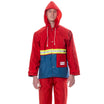
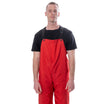
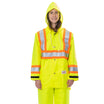
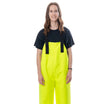
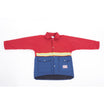
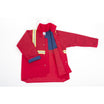

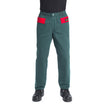
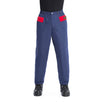
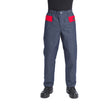
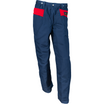
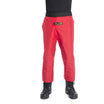
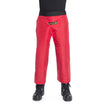
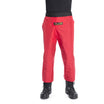
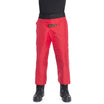
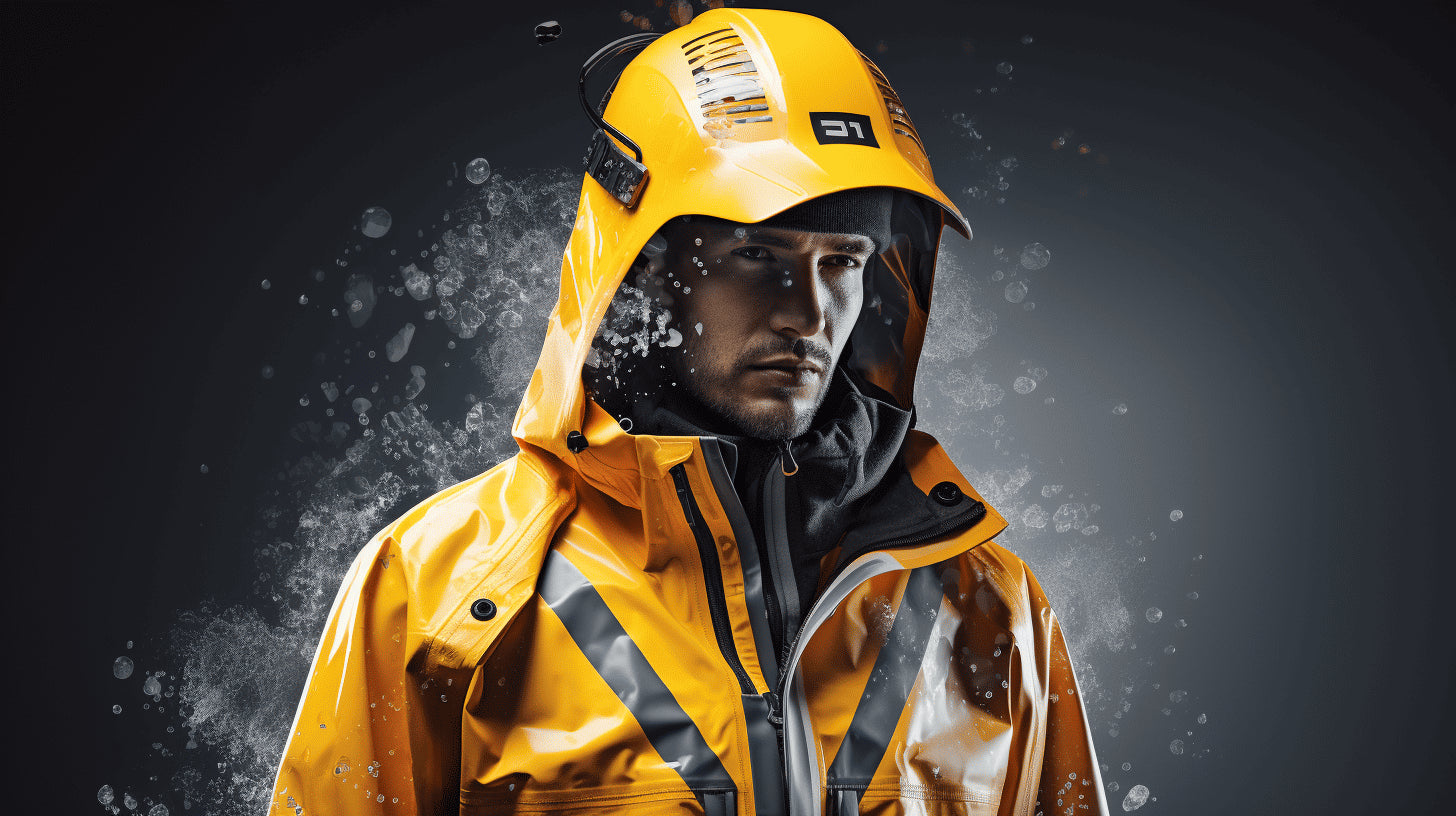
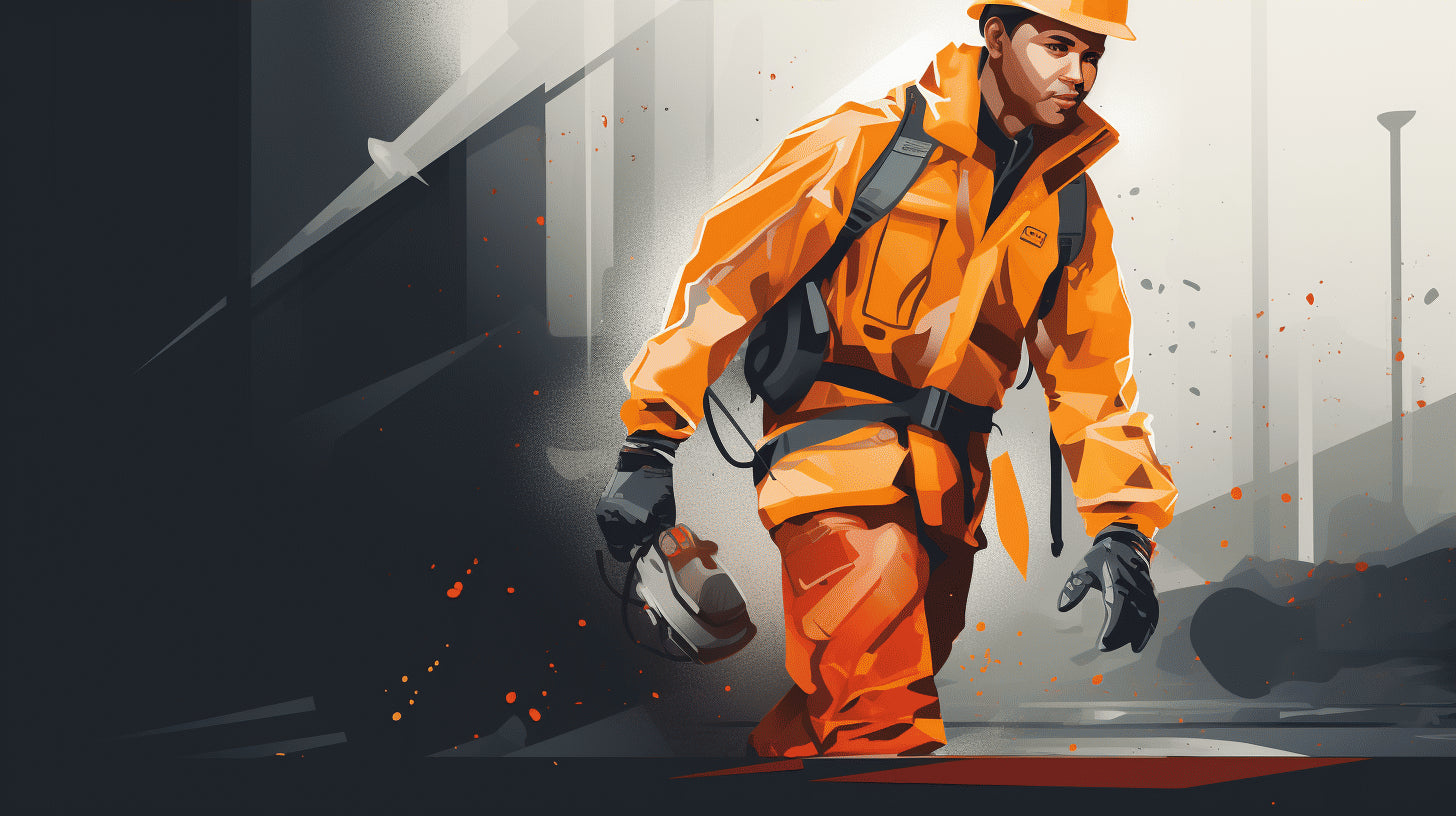
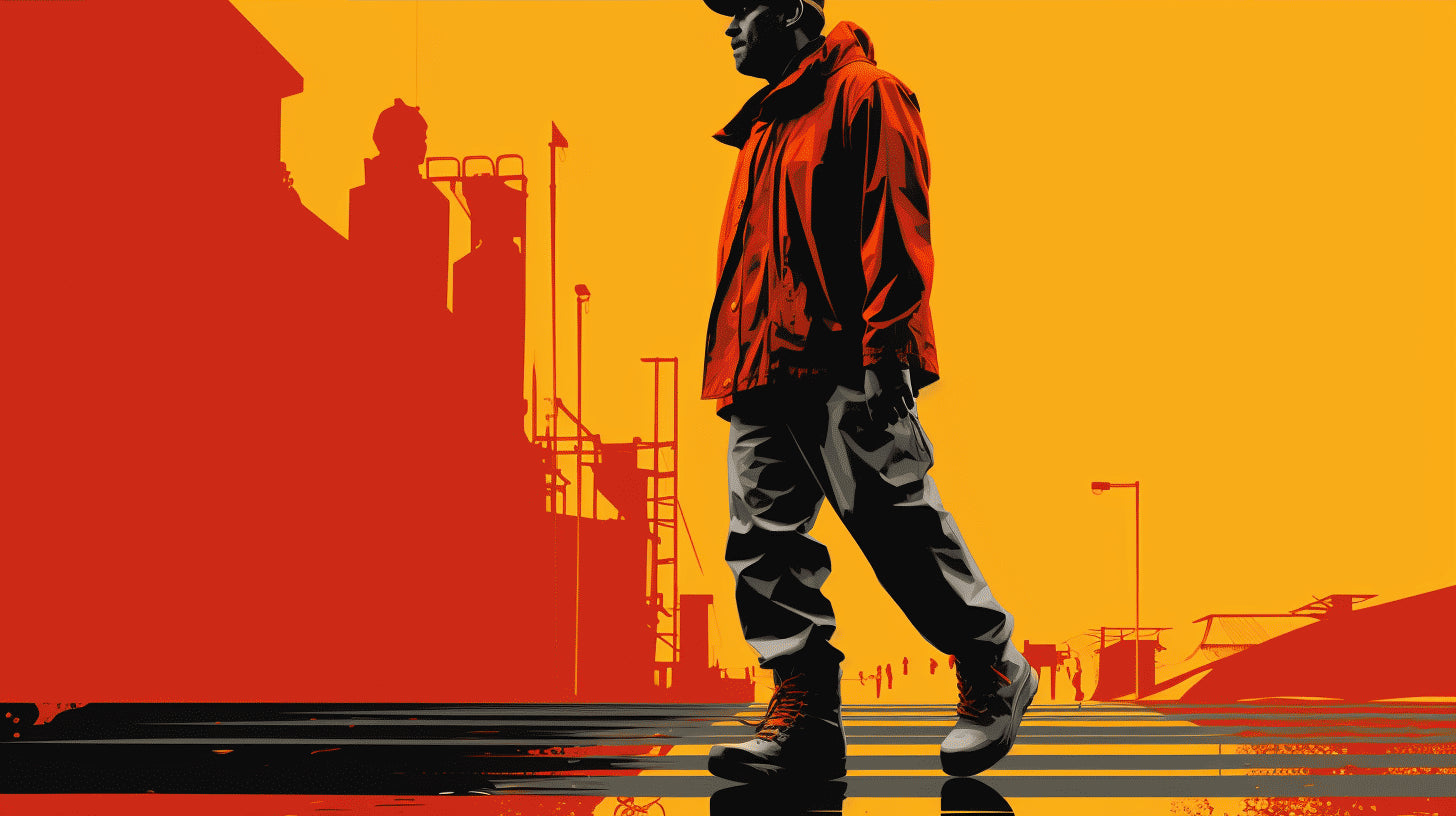
Leave a comment
This site is protected by hCaptcha and the hCaptcha Privacy Policy and Terms of Service apply.